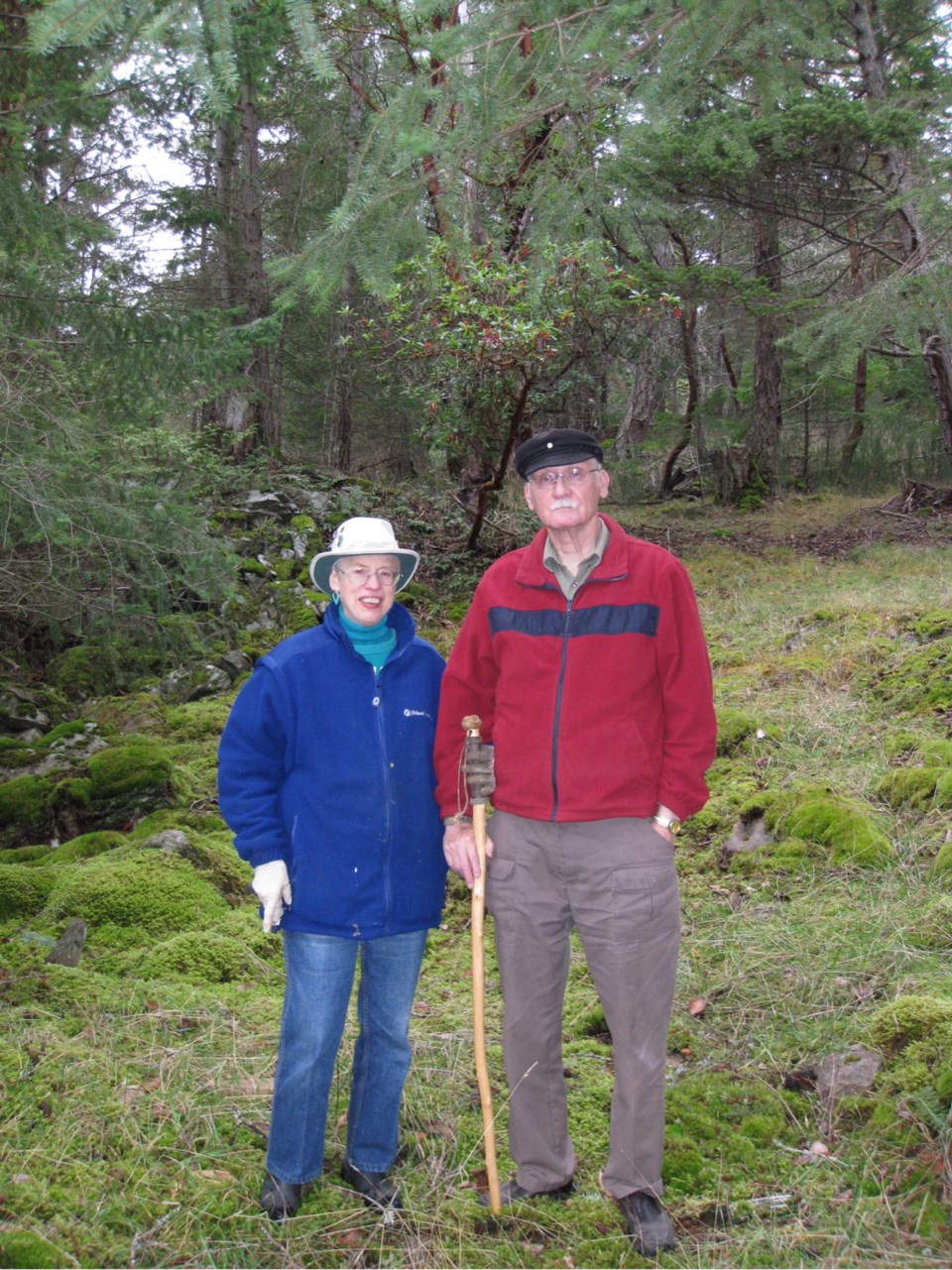The meadow down the steep side of Mount Elizabeth on Robert and Francis Rose’s North Pender Island property is one of their favourite places to spend time.
“We like to sit there, take pictures of the wild flowers. The mason bees come out and do their thing in early spring. The birds come along and start to nest,” Robert said.
That meadow is now protected in perpetuity. In exchange for placing a covenant on their land, the Roses receive an annual 65 per cent property tax exemption through the Natural Area Protection Tax Exemption Program (NAPTEP), administered by the Islands Trust Fund.
“We wanted to preserve at least a portion of our property in its natural way, the way Mother Nature intended it, without human intervention,” Robert said.
“If there had been no tax reduction, we still would have done it.”
The Roses, who are in their mid-70s, are among 23 landowners who have joined the program since its launch in 2005, according to the Islands Trust Fund.
The properties range in size form about half a hectare to 24 hectares and are scattered across the Gulf Islands, including Saltspring Island, Galiano Island, Gabriola Island and Hornby Island.
They cover a total area of about 76 hectares.
The program began as a way to protect nature in the face of rising land values, which can put landowners in the difficult position of choosing between protecting their natural environment and developing it to generate much-needed income, said Kate Emmings, an ecosystem protection specialist with the Islands Trust Fund.
The covenants, which are like contractual agreements between the landowners and Islands Trust Fund, binds future owners, too — and pass on the tax exemption on to those owners.
“It’s meant to target landowners with significant natural features on their properties,” Emmings said.
To qualify, the property must have one or more of these features: Relatively undisturbed sensitive ecosystems; habitat for rare native plant species or plant communities; habitat critical to native animal species’ breeding, rearing, feeding or staging; or special geological features.
Eligible islands include: Ballenas-Winchelsea, Denman, Gabriola, Galiano, Gambier, Hornby, Lasqueti, Mayne, North Pender, South Pender, Saltspring, Saturna and Thetis.
“It is a fairly unique program, because it’s only available in our area of the province,” Emmings said.
There’s been interest in other parts of the province in expanding the program, but they’re typically blocked by legal complications, she said.
“What really enabled us to do it was the uniqueness of the Islands Trust and the fact that we were created through a separate act giving us the power to conserve and protect. I think that mandate has helped to … propel this program forward,” she said.
In a survey of participants, a few said their major motivation was the tax savings, Emmings said.
“The larger portion of landowners said they really loved their land and were very motivated to protect it and ensure the ecosystems survived over the long term.”



